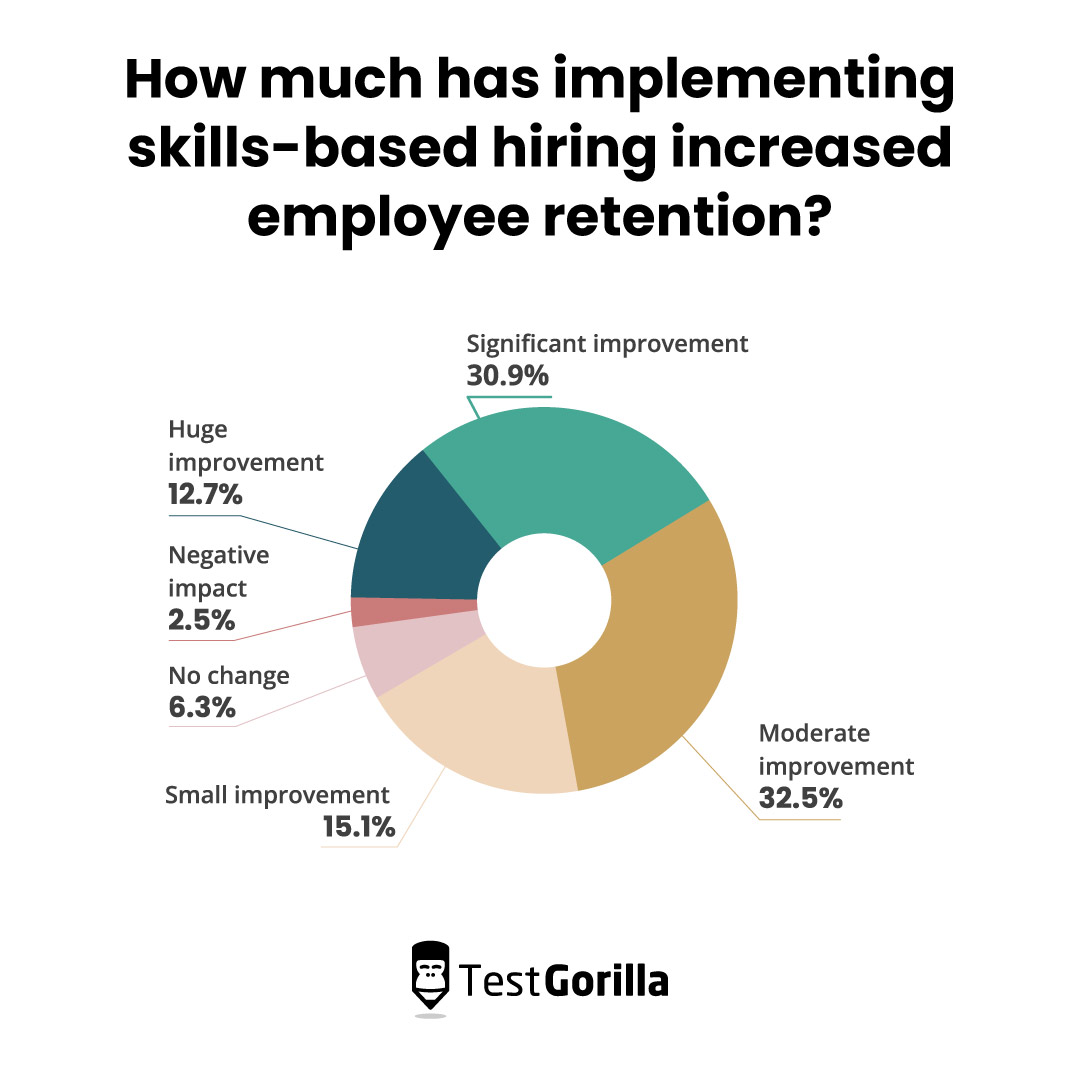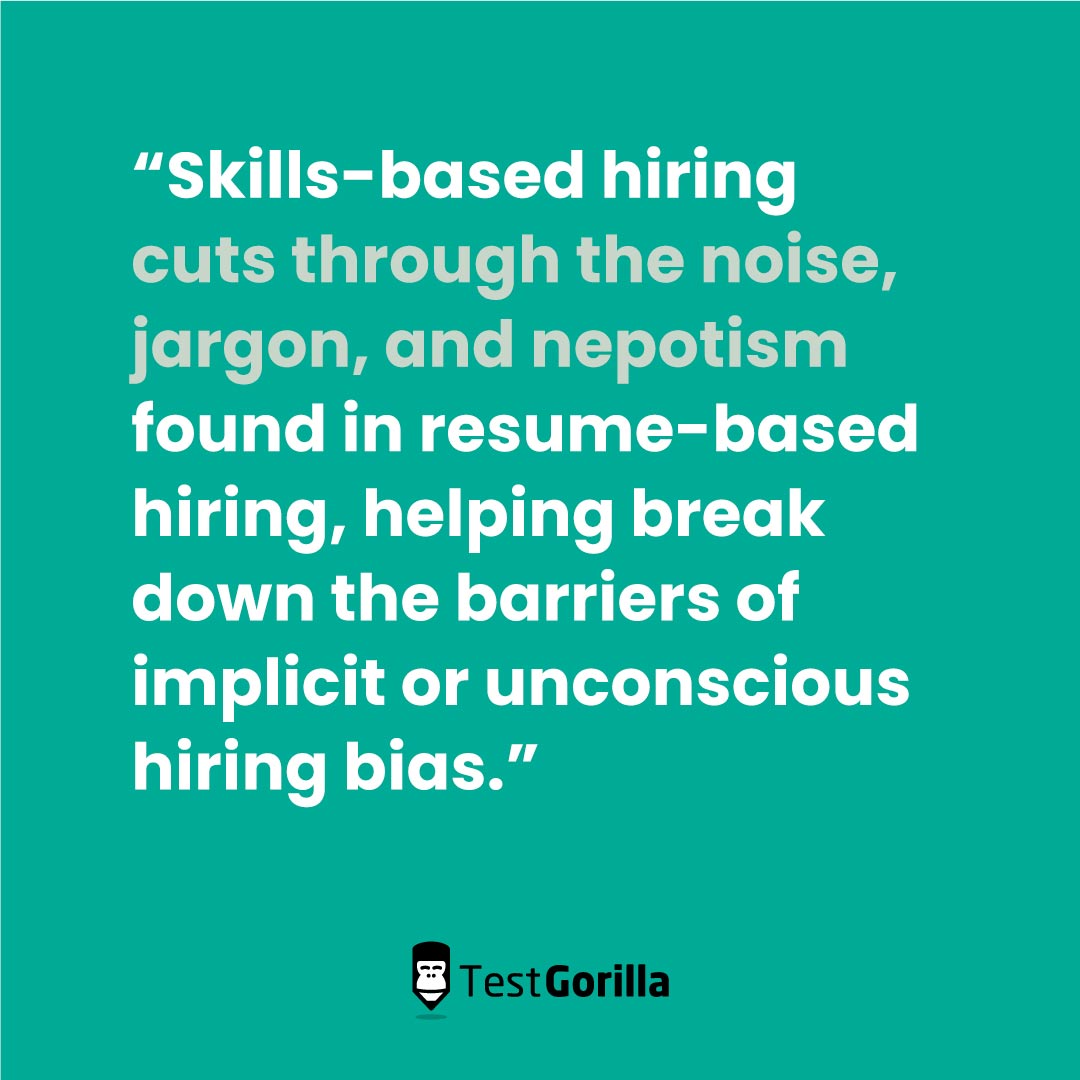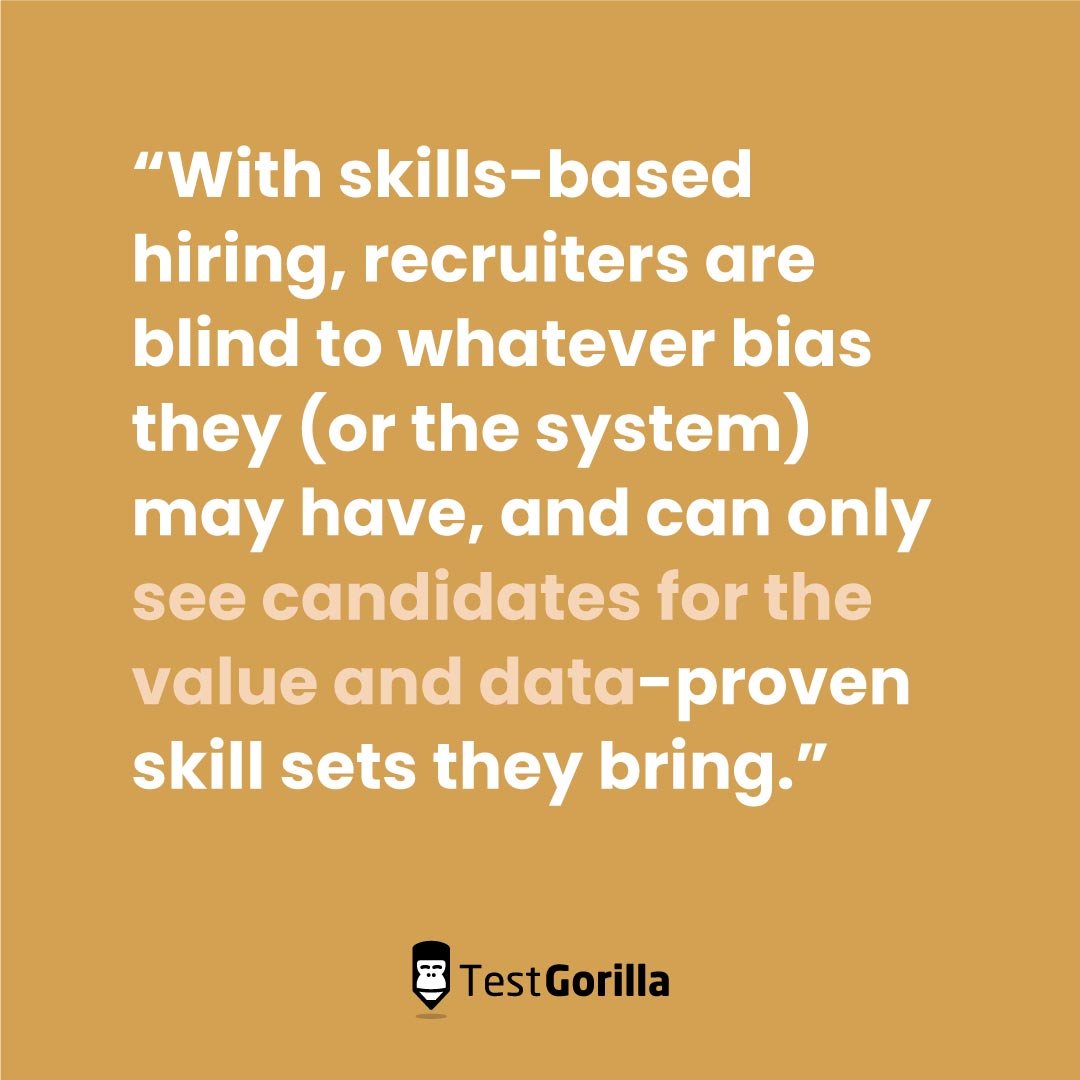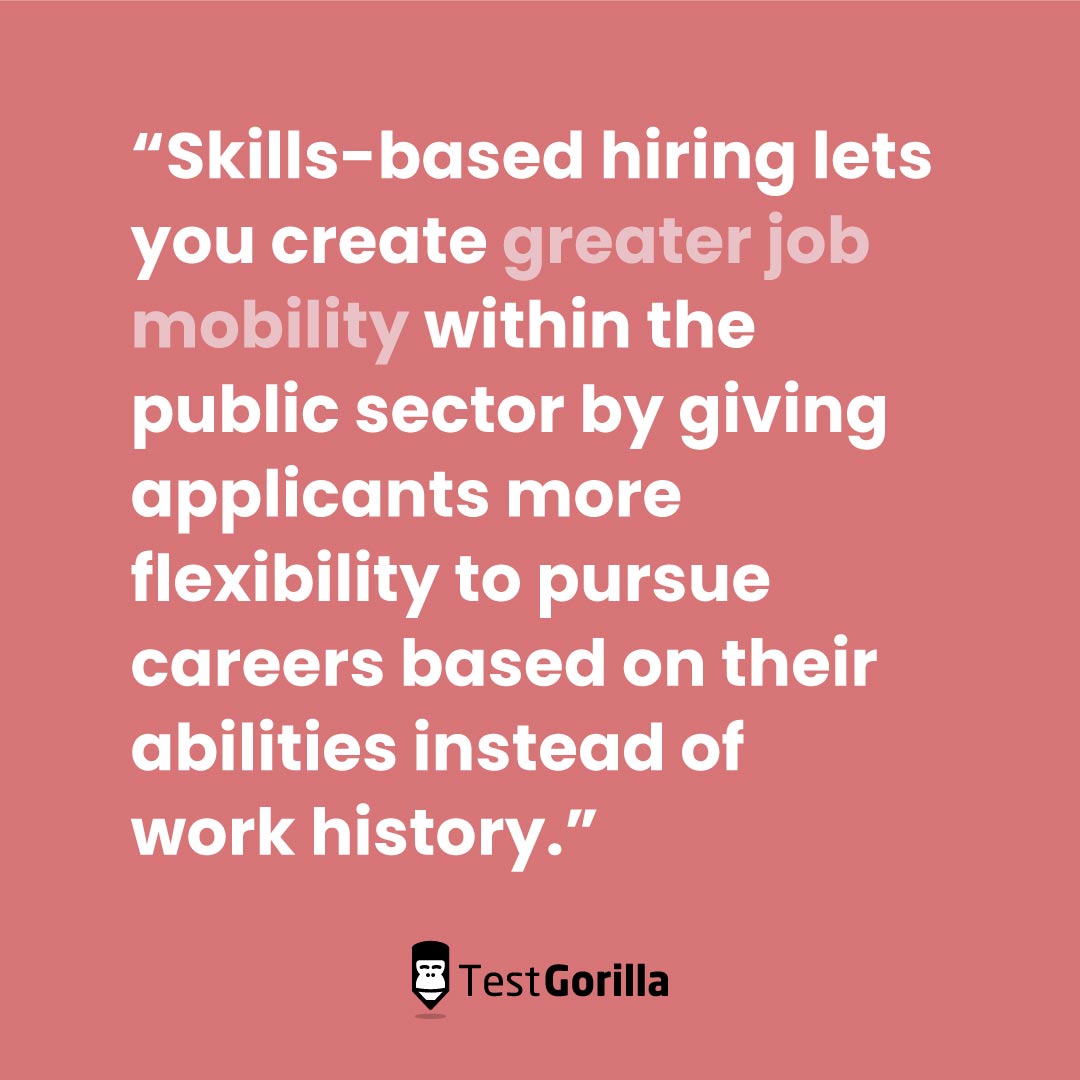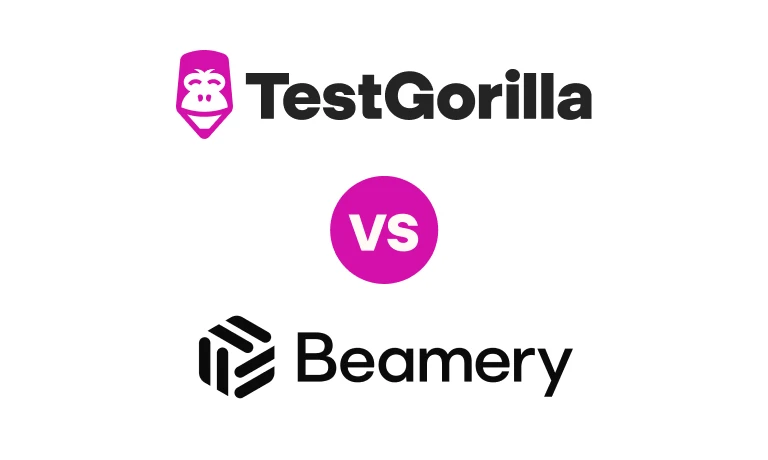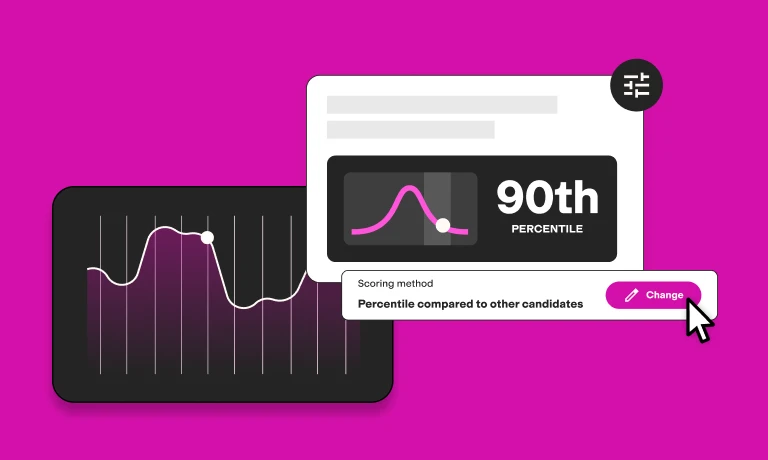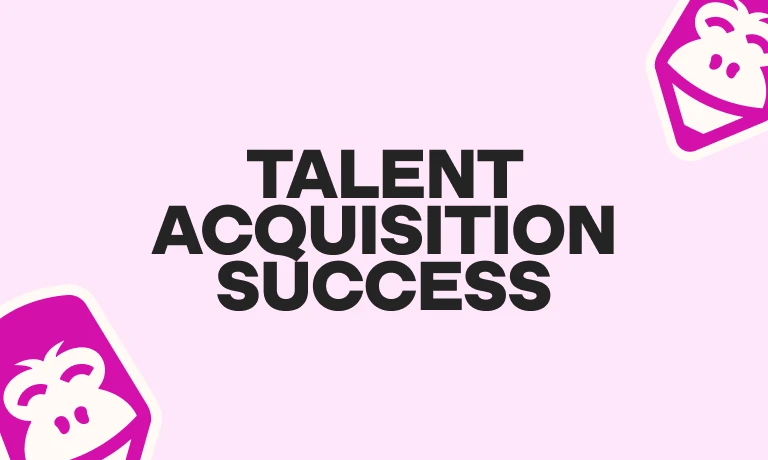Public sector hiring around the world: how to beat the private sector at its own game
Table of contents
A strong government needs a strong public sector to build and implement its initiatives and help make an impact on people’s lives. But without the right talent to handle copious amounts of paperwork, understand government procedures, or roll out major projects or services, governments can’t function properly.
Hiring candidates without the right skills can lead to a waste of public money and a distrust in government. And it doesn’t help you win the war for talent, especially when you’re competing with a private sector salary.
Since governments are typically a nation’s biggest employer, it’s important to understand the skills required for public sector roles — and how to attract, recruit, and retain the best staff for these positions.
In this article, we take a look at:
How skills-based hiring benefits businesses and job seekers
Diversity and inclusion (D&I) in the public sector
Case studies of recruitment in the public sector
How skills-based hiring helps recruit public sector talent
So you can beat the private sector at its own game and hire top talent for your team.
How skills-based hiring benefits businesses and job seekers
Skills-based hiring helps you evaluate candidates based on their competencies with role-based tests and take-home assessments at early stages in the recruitment process. It rewards applicants for their acquired skill sets and expertise, without excluding them based on their education, connections, or resume.
With skills-based hiring, employers can clearly define specific competency or skill targets for their vacant roles — giving the employer and applicant a clear picture of what’s needed to perform and excel.
In our State of Skills-Based Hiring report, organizations that adopted this approach found improvements across four main business metrics: 92.5% saw a reduction in mis-hires, 91.4% saw a reduction in their total time-to-hire, and 89.8% noted a reduction in their total cost-to-hire. And all of them saw an increase in employee retention.
Skills-based hiring significantly increases employee retention rates across sectors.Source
This means when organizations across sectors hire candidates based on merit, skills, or culture-add potential, they’re actively eliminating the bias involved in traditional resume-based hiring — and rewarding the right candidate with the role.
For the public sector, this means saving tax-payer money by limiting employee turnover while keeping employees happy, engaged, and productive.
The reality is that organizations and employers talk about the talent shortage constantly. It does not matter if you’re in the public or private sector, recruiting the right talent is a challenge. The solution is skills-based hiring: removing the college-degree requirements and opening up the talent pool to the millions of qualified, skilled workers currently hidden behind that unnecessary barrier.
Stephanie Short, V.P. of Partnerships, America Succeeds
With data-proven skills, you get a blind take on a candidate’s potential fit with your organization, based on (self-selected) skills and markers that truly predict candidate success.
Diversity and inclusion in the public sector
By using skills-based hiring to remove traditional hiring barriers and bias, you can also increase diversity and inclusion in the public sector.
According to The Organization for Economic Co-operation and Development (OECD), “Diversity and inclusion can contribute to trust, democracy, and innovation when the public service workforce represents the society it serves.”
Despite its importance, diversity and inclusion hiring in the public sector varies from excellent to abysmal depending on the country. For example, a leader in D&I hiring within public service roles is the UK’s civil service: where 53.9% of employees are women, 12.7% are ethnic minorities, and 11.7% have disabilities.
Yet, most countries don’t have such a good track record on diverse and inclusive public sector representation, and need to take concrete steps to remedy this.
For example, Australia has introduced diversity, equality, and inclusion (DE&I) mandates to improve public sector diversity by 2025, with specific targets for increasing the representation of women, Aboriginal and Torres Strait Islander people, and people with disabilities.
Meanwhile, the Canadian government uses Public Service Employee Surveys (PSES) to spot ongoing gaps in its diversity and inclusion efforts. They also utilize recruitment firms that specialize in recruiting Black and other racialized candidates, Indigenous candidates, and people with disabilities. And they created the Mentorship Plus program that prepares cohorts of leaders from minority groups for executive positions.
In the past decade, governments around the world have introduced pay gap reporting to bring more visibility and accountability into diversity hiring practices. For example, organizations with more than 250 employees in England, Scotland, and Wales must publish their pay gap figures annually to course correct the employer’s action plan, narrative, and steps to addressing the gap.
Given the rise in diversity and inclusion hiring initiatives for the public sector, let’s take a closer look at some of the real-life ways that different governments are recruiting staff.
The best insights on HR and recruitment, delivered to your inbox.
Biweekly updates. No spam. Unsubscribe any time.
Public sector recruitment: 3 case studies
Historically, governments relied on theoretical knowledge and education as a basis for recruitment. But many governments now test for behavioral and analytical skills and competencies.
Government and public service recruitment can involve:
Tests evaluating knowledge, skills, intelligence, and personality
Background checks for criminal history
Proof of education (often a university degree)
On-the-job simulations or tasks
Interviews
Health and fitness assessments
However, it’s important to note that governments vary in how rigorously they apply their selection practices.
When they rely on resumes or applicant tracking software (ATS) to hire candidates, they can open themselves up to risk and potential fraud. Take, for example, the trial and imprisonment of one Australian woman: who provided misleading and false information on her resume for a prestigious government job — to which she was appointed. She even put a headshot of Kate Hudson on her resume!
Use the case studies below for information and inspiration on public sector hiring in different parts of the world:
Spain
In Spain, skills-based testing for public sector recruitment is on the rise. Like France, it’s re-evaluating how to assess candidates and what to test for. Meaning, Spain is proactively looking for ways to close the skills gap between public service openings and in-demand skills, alongside other European Union initiatives for reskilling and upskilling graduates.
To recruit for the public sector, Spain uses civil service exams that aim to encourage applicants from a wide range of backgrounds. These exams are broken into:
Competitive examination (passing cognitive tests)
Competition (tests to assess and verify a candidate’s qualities)
Competition-examination (passing tests and merit assessments)
A candidate’s cumulative examination scores then determine their rank and hireability. Recently, Spain started reviewing entrance examination content for elite public sector employees to make them more relevant and inclusive.
To reduce bias, the government uses specific markers like employee output or performance to help determine status and pay. But, if the criteria aren’t transparent and objective, or they’re simply misunderstood it can be harmful and open to bias for marginalized employees.
Japan
In Japan, public service and government roles are recruited through role-based examinations which are open and accessible to all Japanese citizens. To ensure a fair and equitable public sector hiring process, the Japanese government uses a mix of:
Skills-based and theoretical tests
Various activities to attract diverse and promising personnel
Training and seminars about public sector openings
Matching applicants with appropriate tests
To make theoretical testing more objective, the National Personnel Authority (NPA) also offers tests suitable for all education levels. For example, for general service roles, the NPA matches applicants with the appropriate test depending on whether they’re high school or college graduates.
And for more technical roles or ‘comprehensive services’, exams are categorized by the candidate’s level of education but on a higher scale: like liberal arts, legal, or graduate — so they’re more likely to perform well based on their educational interests or pursuits.
The NPA has also taken steps to increase the number of disabled workers, young people, and women in public sector positions and provides training and seminars to marginalized groups regarding crucial openings in public service.
New Zealand
New Zealand takes skills-based hiring in the public sector to a new level by outlining the core competencies required by every role or department and testing candidates’ performance against those competencies and skills.
Most government roles have departmental values clearly stipulated, alongside the characteristics of a high-performing team, and desired state of mind. They also break this down further into the specific knowledge areas, skills, and leadership qualities they expect to see. This acknowledges and celebrates the hard, soft, and transferable skills necessary to succeed in the open role.
The types of tests and questions vary between roles and focus on aspects of the job that the hiring manager believes are most important for the position. For example:
Cognitive tests
Skills-based tests
Interviews
Job simulations or tasks
For entry-level and some medium-complexity roles, the New Zealand government doesn’t evaluate candidates’ work experience. Instead, their skills and alignment with departmental values take precedence, and candidates receive necessary role-specific training.
By emphasizing skills-based hiring and understanding a candidate’s behavioral and emotional landscape, New Zealand has been able to increase Māori (16.7%), Pacific (10.6%), and Asian (13.4%) representation in the Public Service workforce over the past year. It has also increased the number of women in leadership roles (55.8%) and is working on closing ethnic pay gaps.
New Zealand’s efforts are paying off: based on a public service survey administered in 2021, 82% of public servants in New Zealand feel they can be themselves at work.
How can skills-based hiring help recruit public sector talent?
Regardless of government, country, or service, skills-based hiring helps you find the right person for the role. It brings you applicants with the hard and soft skills they need to thrive in a specific role — and improves the quality and consistency of your talent.
Let’s examine a few ways skills-based hiring can revolutionize public service recruitment and create an efficient, equitable state hiring process.
Access to a fairer and wider talent pool
Prioritizing a candidate’s skills for your open position automatically de-emphasizes the importance of non-performance markers in predicting their success. Specifically: their degree, educational institution, socio-economic status, gender, sexual orientation, and religion.
Skills-based hiring cuts through the noise, jargon, and nepotism found in resume-based hiring, helping break down the barriers of implicit or unconscious hiring bias.
It gives you access to a wider, more diverse talent pool that’s rewarded based on their tested skills. Think about it: 60% of Americans over the age of 25 don’t have a college degree. So if you have degree requirements (as opposed to skills requirements) in your hiring process, you’re only looking at 40% of the country’s potential. Which you’ll have to fight private employers for.
Increased diversity and inclusion
When you hire for merit and skills, you level the playing field for otherwise overlooked candidates like women, people of color, veterans, people with disabilities, or people from the LGBTQIA+ community..
For example, evaluating candidates based on a college degree alone eliminates 76% of African Americans, 83% of Latin Americans, and 81% of rural Americans. But, with skills-based hiring, recruiters are blind to whatever bias they (or the system) may have, and can only see candidates for the value and data-proven skill sets they bring.
Of the 2082 employers we surveyed who adopted a skills-based approach to hiring, 91.1% saw an increase in workplace diversity. And out of those companies, 14.2% saw their workplace diversity increase by more than 50%.
Encouraging movement between departments
As millennials and Gen Z continue to populate the public sector, it’s important to enable movement between departments and roles. Especially since they’re moving between jobs faster than generations before. For added context, 25% of Gen Z members plan to leave their current employers in the next six months.
Skills-based hiring lets you create greater job mobility within the public sector by giving applicants more flexibility to pursue careers based on their abilities instead of work history. Without the limitation of resumes and references, candidates with a professional history in, let’s say, compliance auditing can find employment as computer programmers due to the crossover in required computer skills.
So instead of scaring off younger generations from the prospect of a life-long career, you can ensure their skills carry over cross-departmentally and that they are mobile enough to enjoy multiple careers including within the public sector.
And employers benefit from higher employee retention, improved productivity and employee output, and increases in employee happiness and satisfaction.
Use skills-based hiring for public sector recruitment success
The public sector, although not known for its high-paying salaries, offers plenty of perks to employees. But, it still struggles to attract and win skilled talent from private-sector employers.
And it doesn’t help that there’s a stark decrease in growth opportunities if you’re not top talent or a new starter in public service.
To be more competitive in the war for talent — as demonstrated by case studies from Spain, Japan, and New Zealand — the public sector would do well to embrace a skills-based approach to hiring. By placing candidates in roles based on data-proven competencies, not credentials, you get better-performing, more diverse talent for every job.
Want an efficient way to recruit public sector talent? Skills-based hiring helps find the best candidates for your open positions. Download the report to learn more.
You've scrolled this far
Why not try TestGorilla for free, and see what happens when you put skills first.



